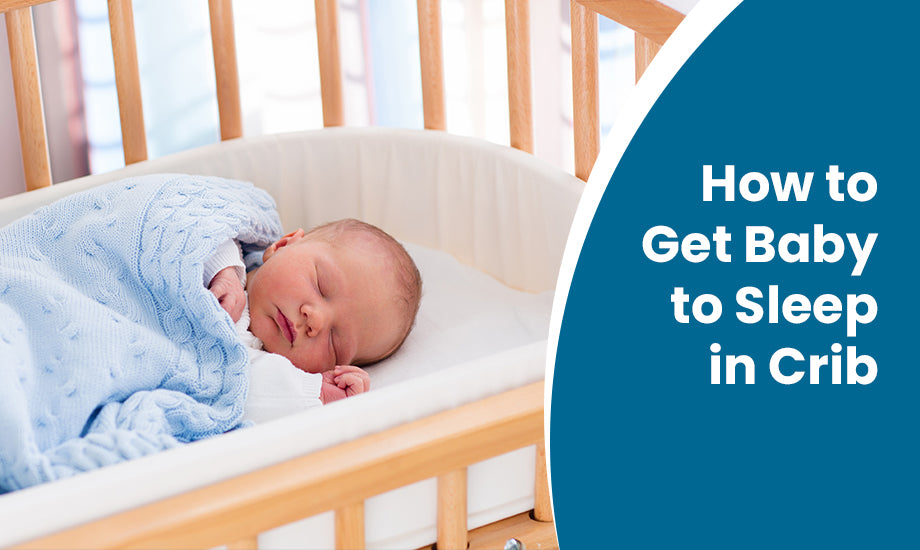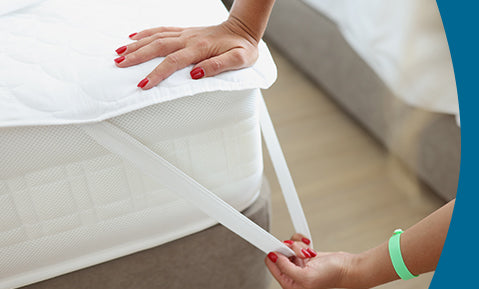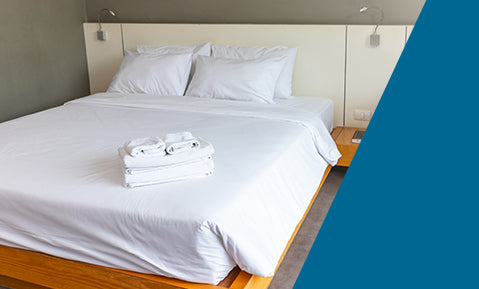
Besides being incredibly good at looking cute all the times, babies are excellent in sleeping. Whether it is in a car or during a feeding, a walk or even in your arms, they can fall asleep almost everywhere, at ease. However, it might get difficult for you to get them to sleep only at one place- that is, a crib. Your newborn or toddler might find it better to sleep in your arms or in your bed.
So, here are the details you need to know about how to get your baby to sleep in a crib.
Why Does Your Baby Refuse to Sleep in a Crib?
In the first several weeks of your newborn's existence, consider where they've been for the previous nine months or so. On the inside, there was warmth, comforting movement, and white noise. They always felt safe and protected, and had a satisfyingly full stomach.
It seems like a lot to ask to suddenly take those items away and then expect them to peacefully fall asleep in a sturdy, empty crib on their own.
When we're talking about older infants or toddlers, their preferences frequently incorporate the comfort and security of having a caregiver around at all times. Attempting to reason with or be patient with young children might be challenging because they don't have these traits.
The other reasons might include:
• Growth Spurts
Though it can happen at any moment, fast-growing babies often see an increase in hunger at 3 weeks, 6 weeks, and 3 months of age.
• Illness
Your infant's sleep can be disturbed by a cold, an ear infection, a rash, or another condition, and she can resist being placed in her crib.
• Teething Pain
Teething can cause gum pain and discomfort in babies as young as 3 or 4 months old, yet the first tooth usually doesn't erupt until at least 6 months.
• New Milestones
Your baby may be practicing interesting tricks in the crib at night, such as rolling over, sitting up, and chattering.
• Sleep Regression
This is a typical interruption to your baby's bedtime pattern that can happen around 4 months, 6 months, between 8 and 10 months, and once more at 12 months of age.
Things to Keep in Mind Before Getting your Baby to Sleep in Their Crib
Making sure your infant has the best possible sleeping environment is the first step.
Remember to put them to bed on their back, on a firm surface, with no loose objects because safety is the top priority.
The American Academy of Pediatrics advises placing the crib in your room for at least the first six months, and preferably the entire first year, if you have the room.
Consider the following factors in addition to a secure bed:
• Temperature
The trick is keeping the space cold. SIDS is at risk from overheating. Utilizing a fan to circulate the air could be advantageous.
• Costume
Think about clothing your child in a sleeper to keep them cozy in a cool environment. Make sure the sleeper fits snugly, that there are no loose threads that could snare little toes, and that the weight of the cloth is appropriate for the warmth of the room.
• Sack or Swaddle
For increased warmth or protection, use a sleep sack or swaddle. Just keep in mind that once your child can roll over, you should cease swaddling them.
• Noise
There was seldom much quiet during pregnancy. White noise and muted sounds were present instead, and they hummed continuously. Using a white noise generator or an app, you can reproduce this.
• Lighting
Keep everything eerie and calming. To aid in daytime sleep, think about utilizing blackout curtains. When checking on your infant or changing diapers, use nightlights or low-wattage bulbs to provide light.
• Smell
Your baby enjoys and finds comfort in your smell. Before using it, you can try sleeping with their sheet, sleeper, or swaddle blanket to impart your smell.
• Hunger
When one is hungry, one cannot sleep, and babies frequently experience hunger. Make sure you're feeding your baby eight to twelve times per day, every two to three hours.
• Bedtime Routine
Having a routine will help your child to comprehend what is going on. Try to establish a routine that you may use whenever you are getting ready for sleep, not just before bed.
It's not necessary to have a complicated or elaborate routine. You can read a brief book to them, feed them, and snuggle them before putting them in their crib, still awake but tired.
One thing you can try doing is gently singing to them or putting your hand in their tummy to comfort them if they startle or fuss while putting them in the crib.
You might need to repeat the stage of putting them down in the crib while cuddling them several times. However, this does not imply that you are acting improperly.
Both of you are learning new things, and learning new things takes time and effort. Give you baby the hugs and food they need if they wake up in the midnight. However, put them back in their crib soon after you finish feeding, changing outfit, or diapers. Reduce distractions including loud noises, bright lights, and conversation.
How to Get your Baby to Sleep in Their Crib?
• Put Down the Baby While Drowsy
As adorable as it may seem, avoid letting your infant sleep on your chest or while curled up in your arms. When she is sleepy but awake, rock and sing her a little before putting her on her back in the crib so she can learn how to go asleep on her own in her own bed.
• Wait for a Few Minutes
Wait a few minutes before going to the baby because babies can be fidgety sleepers and may fuss a little in the crib. She might go back to sleep on her own.
• Start with Naps
There can be tears if you're transferring your infant from a bassinet to a crib. Try to ease her into the new arrangement gradually while maintaining your regular night routine to help calm the commotion throughout the transition. For instance, let her first take a nap in the crib before having her sleep there at night.
• Do not Rely on Slings, Swings or Car Seats
These comfortable perches may calm your child, but they are not intended for secure napping. If your infant begins to doze off in one, move her as soon as you can to the crib.
• Increase their Playtime
Give your baby lots of time throughout the day to practice her new rolling, creeping, and crawling talents, and she might even take a break at night.
• Stick with Flat, Firm Surfaces
Concerned that your infant isn't at ease or that a softer mattress would promote deeper sleep? Avoid the temptation to cover the crib with bumpers, blankets, stuffed animals, or sheepskins. The most secure sleeping surface is a firm mattress that is devoid of these things. Also ensure that you are providing your baby with comfortable baby pillows. Whether you need premium pillows or luxury pillows, you can search them online on sleepsia.
• Be Consistent
This is a hard one. Of course, you'll need to adjust and adapt if your infant is ill, you're on vacation, or you're experiencing other significant changes. However, the more you can maintain their expectations of you, the better your outcomes will be.
Apart from these, here are some more tips you can try to get your baby comfortable in a crib.
- Think about their preferences – perhaps motion or sound? Look for ways to include those items in their time in the crib if they frequently doze off in the middle of a noisy room or when you are driving. White noise generators or vibrating mattress pads can be used to mimic the soothing sounds that some find relaxing.
- It's acceptable if your schedule differs from what others do because it's your own. Even a quick stroller trip around the living room can be incorporated into the nighttime routine if your kid settles down well in the stroller. Move them to the crib once they are content and at ease.
- If your child starts screaming every time they are put on their back, look for other symptoms that could point to reflux or an ear infection.
- If your child was sleeping soundly in the crib but is now having trouble, you should explore whether a sleep regression may be to blame.
- Never use the crib as a timeout or punishment.
- Verify the safety of the crib for the child's age and stage. As they alter and grow, lower the mattress and put things out of their reach. Keep a watch on their growth and development. Pillows and blankets should not be added until the child is developmentally ready.
Conclusion
As you can see these are a few of the ways you can put your baby to sleep in a crib. Though the process is time-consuming and requires patience, not giving up is the only answer. To ensure your baby sleeps comfortably, don’t forget to also provide them with comfortable pillows and bed sheets.












